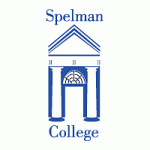Below is a summary of the abstract you submitted. Presenting author(s) is shown in bold.
If any changes need to be made, you can modify the abstract or change the authors.
You can also download a .docx version of this abstract.
If there are any problems, please email Dan at dar78@pitt.edu and he'll take care of them!
This abstract was last modified on May 25, 2024 at 12:01 a.m..

Advances in the Nanopore sequencing technology are revolutionizing course-based undergraduate research experiences (CUREs). Currently, the R10.4 flow cells sequence long reads that are approximately 99% accurate. While the accuracy of Nanopore does not match Illumina (up to 99.9%), Nanopore provides an affordable sequencing technology that can be used in the classroom for students to sequence their samples. For this study, twelve phages were isolated from soil using Gordonia rubripertincta NRRL B-16540 and Arthrobacter globiformis B-2979 as hosts. DNA was extracted from the high titer lysate and sequenced using a Nanopore MinION Mk1C and an R10.4 flow cell. Assembled contigs ranged from 38,340 to 94,089 base pairs (bp). These phages belonged to nine distinct clusters, and one was a putative singleton. To highlight one phage with both Nanopore (971X coverage) and Illumina (906X coverage) sequence data, reads from BillyTP (Cluster AY) assembled into a 53,003 bp genome from both sequencing technologies. An alignment of the Nanopore and Illumina assemblies of BillyTP showed that these sequences were 99.99% identical and only varied by one bp, which was likely due to a SNP. While this result is promising, further investigations should be performed to compare Nanopore vs. Illumina assemblies to ensure that no gaps or errors are present in these assemblies.

